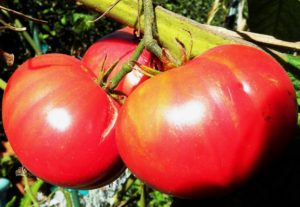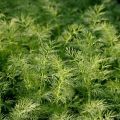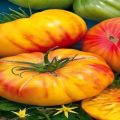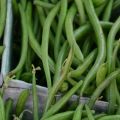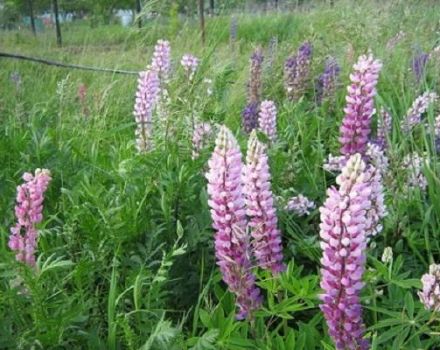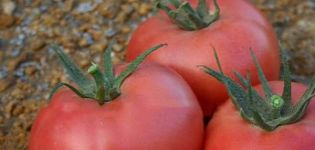Description of the tomato variety Salute, features of cultivation and care
Greetings, dear readers and gardeners. The summer cottage season will come soon and it's time to start purchasing seeds. Let's look at what characteristics the Salute (or Fireworks) tomato has.
This article will tell you what features the Salyut tomato variety has, how best to care for it, and at what time to plant it in the ground.
Characteristic
First of all, it should be said that this variety is mid-season, ripening will take a little more than 120 days. You will know the tomatoes are ripe when they are juiced and reddish pink. There is also a color of the variety, which is distinguished by originality due to stripes of yellow specks.
The fruits are medium-sized, fleshy, ideal for canning or baking whole-fruit. The taste is quite good, so tomatoes of this variety are also used raw, for example, in salads. Tomatoes are strong, therefore they are well transported and stored for a long time. The height of the bush is average, about 30 cm, about 5 inflorescences are formed on the brush.
Honey Salute
There is a special kind of tomato belonging to the same variety. Honey tomatoes are characterized by:
- yellow-red color;
- large size;
- unusual taste.
The fruits of this variety have honey-sweet notes, so they are most often used for making cold sauces or unusual dishes.
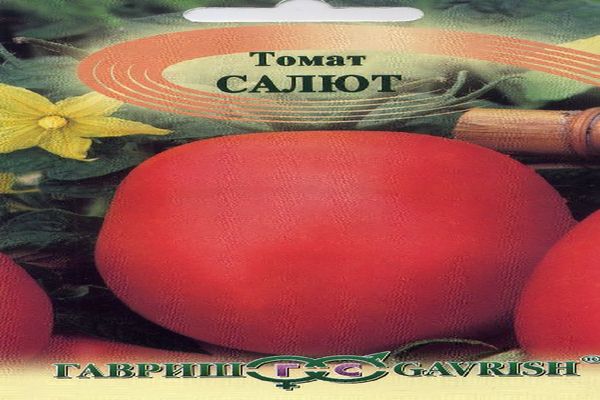
Unlike the classic Salute, yellow tomatoes require more care. Their fruits are much softer and more susceptible to infections.
Harvest
The yield of tomatoes Salute is high, the bushes are wide and strong, and bear fruit well. In addition, the fruits ripen gradually, so that the crop is usually harvested several times. The bushes will be sprinkled with fruits, like fireworks, hence the name of the variety. From a pair of bushes, on average, you can collect 7–8 kilograms, while each fruit separately weighs about 40 grams. Based on this, you are able to judge the number of fruits for yourself.
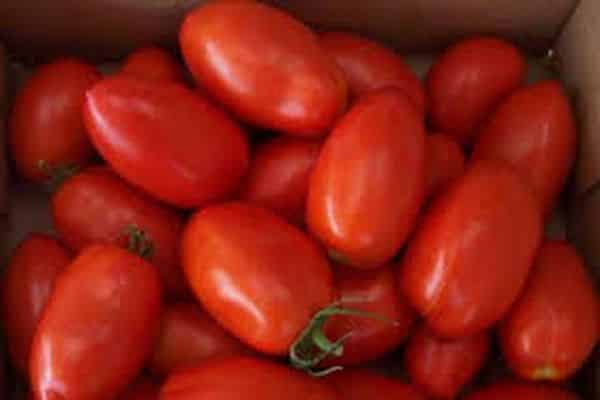
Priming
This tomato variety is intended for growing in warm climates. Most often it is grown in the south of Russia or in the Moscow region. In regions with average temperatures, this variety is best planted in:
- greenhouses;
- greenhouses;
- under a film covering;
- under spunbond.
With sufficient soil warming and warm air, the tomato will grow and bear fruit well.
It is recommended to plant sprouts in greenhouses or greenhouses due to the fact that the fruits are easily infected with various infections. In addition, it is possible to insulate the ground with a film coating. In addition, condensation will form under it, which will provide additional moisture to the plants. And on hot days, a greenhouse or spunbond will help shelter the bushes from the scorching sun.
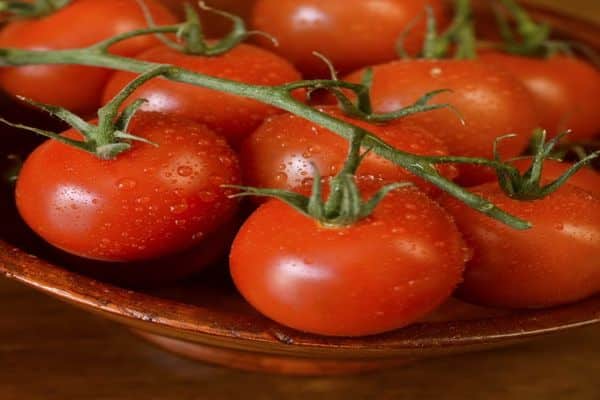
Landing
It is better to plant it in the soil later, when the earth warms up; this should be done at a distance of 30–40 cm from each other. It is better to plant and pick after the first leaves appear on the shoot, according to the description, this happens about a month after you have planted the seeds. It is better to start planting seeds already in March-April, so that the harvest will please at the height of summer.
The first month, the seedlings should germinate at home, since the shoots will be rather weak at first.
The sprouts need to be planted, although the size of the bushes is not at all that large, however, the root system needs space to grow and get stronger.
This is not to say that this variety does not require maintenance, it needs periodic watering, cutting off excess stalks. It is also recommended to occasionally water it with solutions with mineral fertilizers. The stems can be further strengthened by tying to a support. To do this, use a stick, on which you can put a fruiting brush so that it does not hang down to the ground.
Customer Reviews
According to customer reviews, the Salut tomato variety has a high yield and with it there is no need to worry that the fruits will be of poor quality or not at all. Many have made it their favorite and continue to plant it annually. And they are satisfied, even in comparison with new seeds, which are taken for testing.
